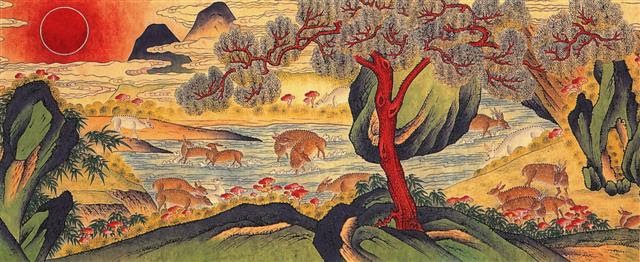Jeong Mong-ju, a civil minister in the late period of the Goryeo was murdered in the same year when Yi Seong-gye founded Joseon (1392). He was assassinated on the Sonjukkyo bridge in Kaesong following a banquet held for him by Yi Bang-won, the fith son of Yi Seong-gye who eventually became Taejong of Joseon later.
Jeong Mong-ju was murdered because he refused to betray his loyalty to the Goryeo dynasty. Yi Bang-won recited a poem to dissuade Jeong Mong-ju from remaining loyal to the Goryeo court but Jeong Mong-ju answered with another poem that affirmed his loyalty.
The bridge where Jeong was murdered in N Korea has become a national monument of that country. A brown spot on one of the stones is said to be Jeong Mong-ju's bloodstain and it said to become red whenever it rains.
Currently his direct surviving descendants are his 21st and 22nd generation. All of them reside in S Korea and the U.S.
The portrait of Jeong Mong-Ju
[img]  [/img]
[/img]
Different version, better quality
[img] http://cfile233.uf.daum.net/image/1474DA274B9063330F94F1 [/img]










.jpg)



